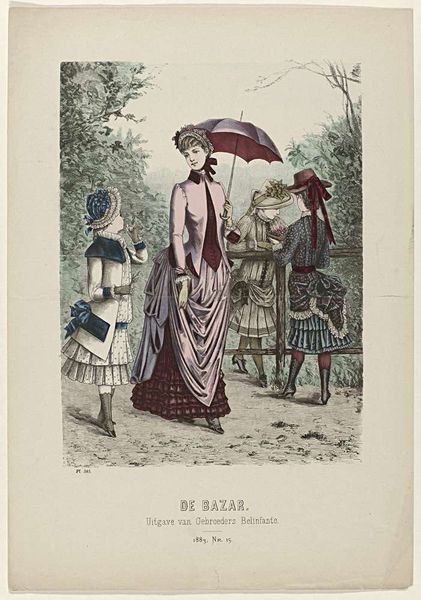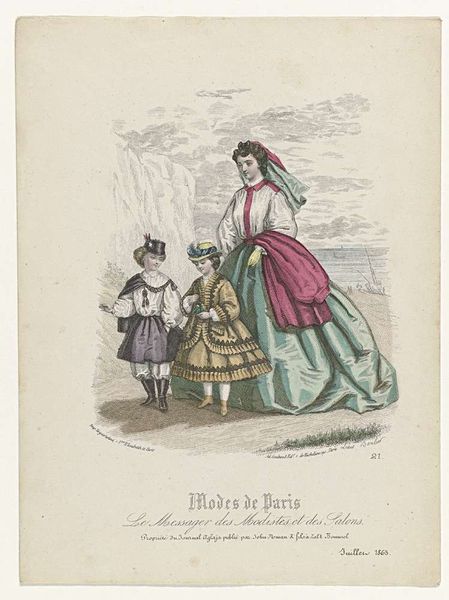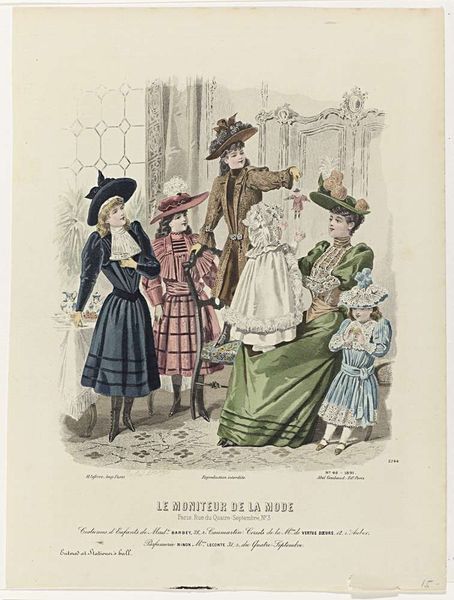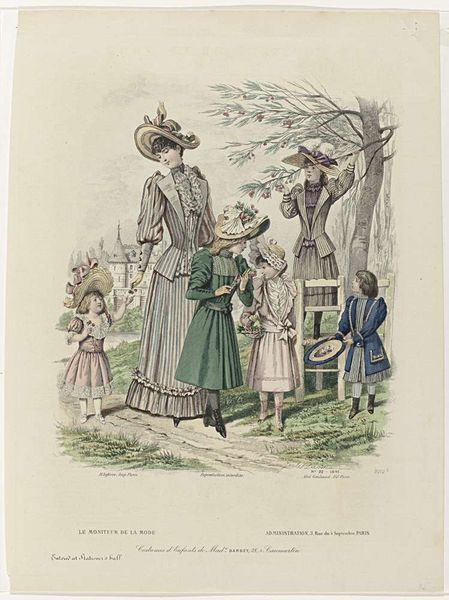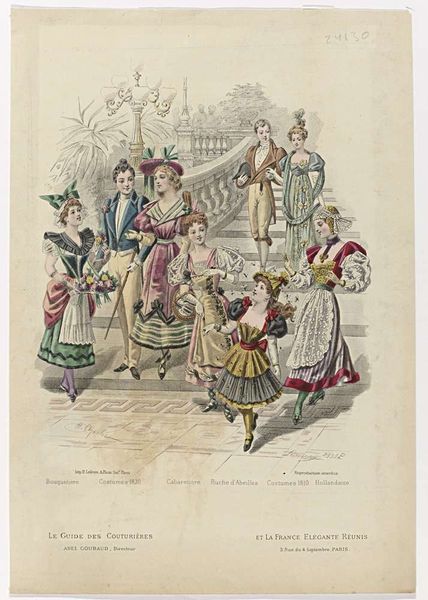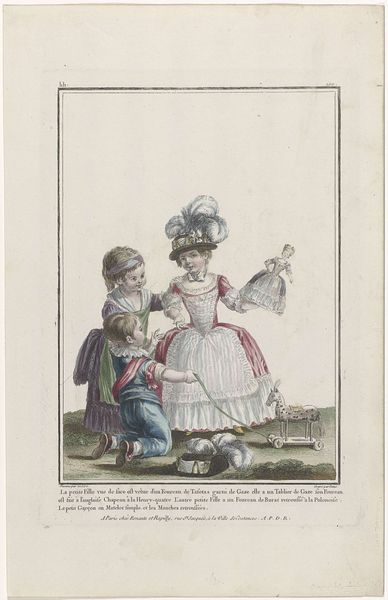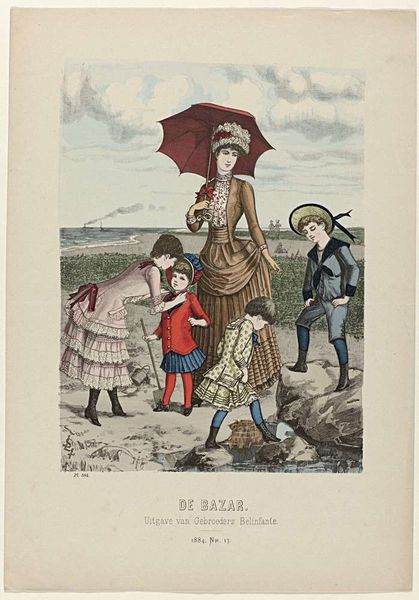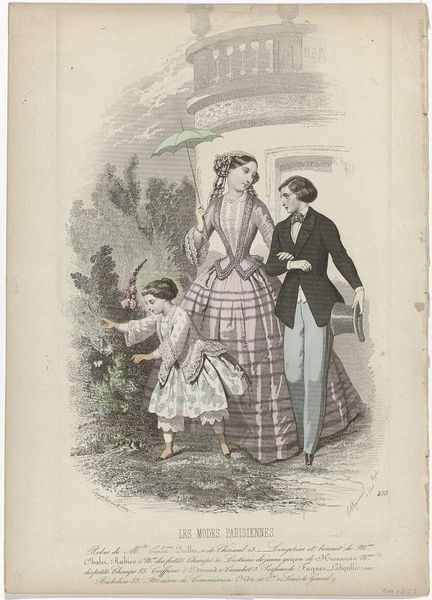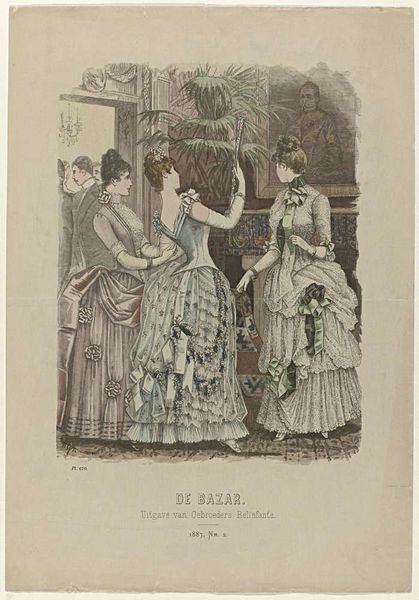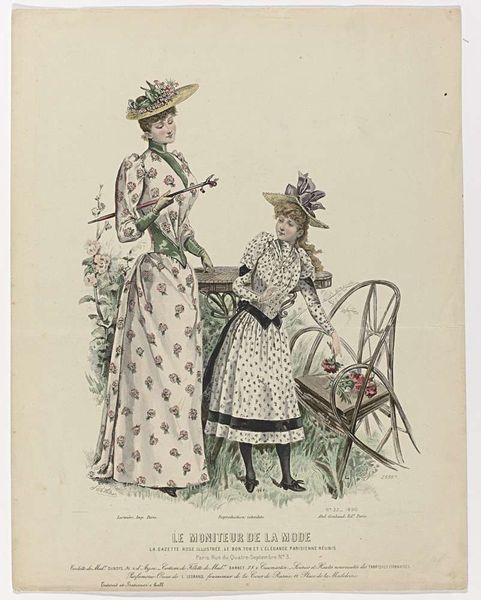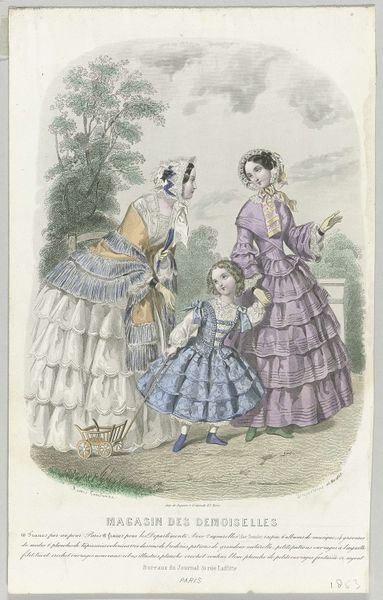
drawing, paper, ink
#
drawing
#
landscape
#
paper
#
ink
#
watercolour illustration
#
genre-painting
#
academic-art
#
realism
Dimensions: height 382 mm, width 270 mm
Copyright: Rijks Museum: Open Domain
Editor: This drawing, "De Bazar, 1882, Nr. 14, Pl. 509," from 1882, is rendered in ink and watercolour on paper. It shows a woman and three children in what appears to be a park setting. I'm struck by the detailed rendering of the clothing. What catches your eye? Curator: The rhythmic interplay between light and shadow certainly establishes a hierarchy of form. Observe how the artist delineates space through contrasting textures: the meticulous lacework of the children's garments against the rough-hewn texture of the stone wall. Are you seeing any underlying compositional frameworks or arrangements? Editor: Well, I notice the woman is centrally placed, dividing the composition. Her elaborate dress acts as a focal point because of the detail of the ruffles, pink fabric and the composition becomes less detailed as it moves towards the edges. Curator: Precisely. Note how the curvilinear forms of the tree branches in the upper right echo, but also contrast with the geometric, vertical folds of the dresses. Semiotically, one might read this opposition between nature and artifice as symbolic, mirroring broader concerns within Academic art circles. How does this distribution of visual information contribute to your experience of the artwork? Editor: It creates a clear focal point but feels a bit staged because the artist's style relies on precision, detail, and controlled line work. I also wonder about the effect of the muted color palette on the overall composition. Curator: Indeed, the restricted palette encourages a closer reading of the lines, patterns, and how they activate the page. And that precision informs an assessment about its stylistic qualities. It seems these considerations point us towards realism's relationship to, perhaps even its reliance on artifice. Editor: That’s interesting. Thinking about the composition has completely changed how I perceive the artwork now! Curator: Exactly, formal analysis provides ways to describe its structure, materiality, and composition, thereby enhancing our appreciation for the artwork.
Comments
No comments
Be the first to comment and join the conversation on the ultimate creative platform.

